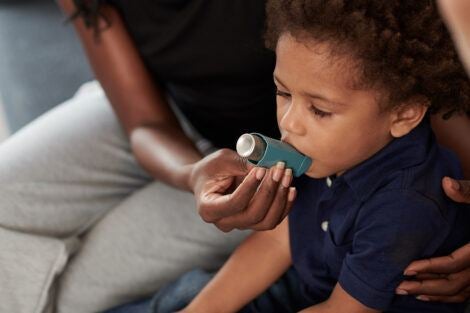March 1, 2024—Early life exposure to air pollution may increase the risk of developing asthma by early or middle childhood—especially among socioeconomically disadvantaged children, according to a new study co-authored by Harvard T.H. Chan School of Public Health.
The study was published on February 28 in JAMA Network Open. Antonella Zanobetti, principal research scientist in the Department of Environmental Health, was the first author. Other authors included Brent Coull, professor of biostatistics; Heike Luttmann-Gibson, research scientist in the Exposure, Epidemiology and Risk Program; and Diane Gold, professor in the Department of Environmental Health.
While previous studies have evaluated the relationship between air pollution and childhood asthma, few included the geographic, racial and ethnic, and socioeconomic diversity to investigate the role of other social factors, such as the quality of the neighborhoods in which children live. To fill this gap, the researchers studied asthma diagnoses and exposure to fine particulate matter (PM2.5) and nitrogen dioxide (NO2) air pollution among a racially diverse group of 5,279 children.
The study found that exposure to PM2.5 or NO2 during the first three years of life increased a child’s odds of developing asthma by early or middle childhood. Additionally, the researchers observed that this association was strongest among Black children; children whose mothers had less than a high school diploma; and children living in urban, under-resourced communities.
According to the researchers, the study underlines the need for stronger air pollution regulations, along with more investment in efforts to reduce health inequities and improve health outcomes among marginalized populations.
Read the study: Early-Life Exposure to Air Pollution and Childhood Asthma Cumulative Incidence in the ECHO CREW Consortium
Photo: iStock/DragonImages
